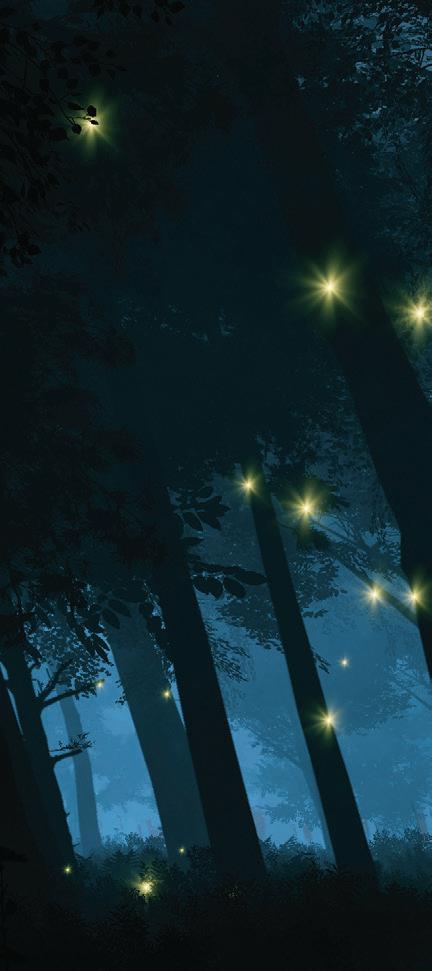
1 minute read
firew ks

followed by a pause, then a random and chaotic display, a pregnant pause, then they start it all over again. How they communicate the timing is a curious matter, and it is a wondrous event to witness.
Fireflies are ordered by entomologists into the family Lampyridae , which makes sense if you think about it. The bioluminescent blinking bottom — the lamp — is the most distinguishing characteristic among a litany of beetles. The blink is made up entirely of chemical reactions wired in the nervous systems, and it gives off no heat. You might say it is energy efficient, yet it is a primitive technology eons old.
All of the fireflies around the world live in warm, humid climates. So while the sweltering heat of a Buckeye July may cause you to retreat to the AC, it’s what fireflies live for — literally — during the critical reproduction arc of their life cycle.


Fireflies spend most of their two-year life span on or in the ground as a grub, a wormlike creature living in the forest leaf litter or in the fields plowing soil just below the surface. That’s where they turn soil or move through decaying leaves in search of food. These larval lamps eat worms, other grubs, snails, and bugs. Farmers appreciate firefly larvae because they keep down slugs and snails that otherwise sup on soybean seedlings fresh out of the ground.












With the coming rise of Sirius and the heat of summer’s swelter, they undergo one of the most remarkable wonders of nature: the metamorphosis that turns them into winged beetles. Adult fireflies live only about two months after they have reproduced.




The lumbering flight of fireflies makes them easy to catch — and to marvel over as they blink in your cupped hands. Their transformation from grub to blinking beetle evokes a sense of wonder in children from age 8 to 80 as the beetles put on their fireworks display, which will continue during evenings well past Independence Day.


















